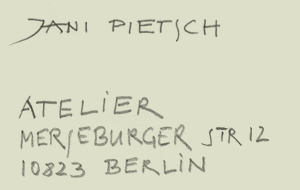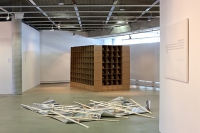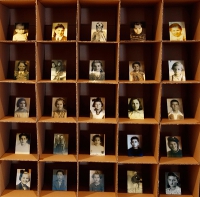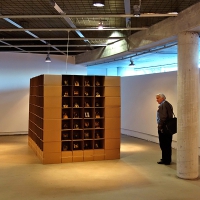SHIFTING IDENTITIES - Installation (2013)
![]()
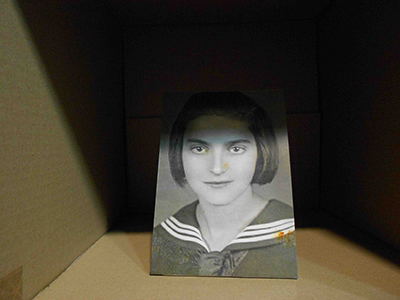
![]()
Shifting Identities, Ewa Weiler, © Ghetto Fighter's House Archives, Israel
![]()
From 2011-2013, I took part in a Polish-German art project (www.silesiatopia.de)in the region of Zabrze, Poland. Ten visual artists from Poland and Berlin were asked to translate their personal view of the Upper Silesian region into an art form.
My research in Zabrze focused on the absence of people. Empty spaces, invisible voids as expressions of loss, of a vanished Polish Jewish world.
While doing online research in the Ghetto Fighters’ House archives in Israel, I came across the The Album of the Jewish Children’s Home in Zabrze. Compiled in 1950 as a gift to “the father of the Jewish orphans in Poland”(1) Yeshayahu Drucker, the album contains about 196 small black-and-white portrait photographs of survivor children on twenty-two black pages.
![]()
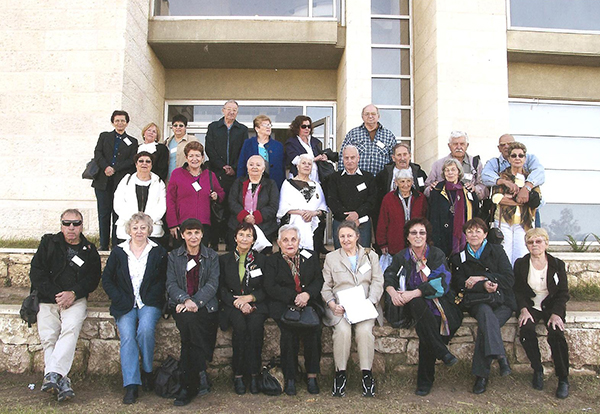
![]()
Child Survivors from Jewish Children’s Home in Zabrze meet in Jerusalem, Israel, 2011 © Dawid Danieli
![]()
Most of the 196 Polish Jewish children in the “album” survived the Holocaust in Poland because non-Jewish Poles rescued them. Some of the children found shelter in Polish families. Some were forced to roam through forests and villages, hunting for food and struggle each day anew for survival. Others hired themselves out as labour in various villages or found shelter in church-sponsored orphanages or convents. Many were forced to live under false identity. Some were so young when separated from their parents that they forgot their real names and identity.
Drucker traveled throughout Poland, locating and redeeming Jewish children. Many of the children had no family relations in Poland or even abroad, yet they were the sole survivors of entire Jewish families. Some of these children were even baptised after the war. Drucker began to negotiate with the Poles, and to pay the families for their financial outlay during the war. He arrived in an army car, he was dressed in his officer’s uniform that gave the impression that the government wanted the matter settled and the children released. He personally led many of the hidden children to the Jewish Children’s Home in Zabrze. 1945 this Home was established in the former small synagogue of Zabrze and funded by the Central Committee of the Jews in Poland, the American Joint Distribution Committee, and contributions organized by rabbis overseas.
All of the young children and teenagers in the Children’s Home in Zabrze were Holocaust survivors. All of them had been rescued. They were alive and safe, and childcare workers, who were themselves survivors, looked after them lovingly. But each single child felt afraid, alone, isolated, apart, and had to cope with the devastating fact that she or he was the sole survivor of their family. Some were traumatized a second time when they were taken away from their foster families and stripped of their new Polish Catholic identity. Every single child who spent some time in the Children’s Home in Zabrze went through a difficult and strenuous period of waiting, of transition but also of departure to a new life.
When the cold war had come to Poland all Jewish Children’s Homes (2) were closed down by the Polish government that was now suspicious of all Zionist, Yiddish and Hebrew activities.
![]()
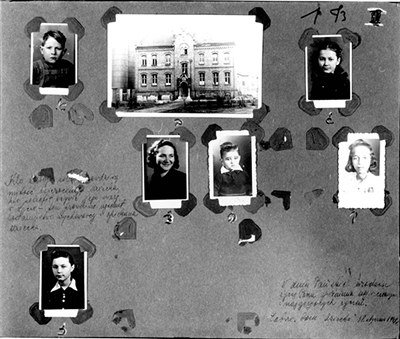
![]()
Album of the Jewish Children's Home in Zabrze, page 1, © Ghetto Fighters' House Archives, Israel.
![]()
The Album of Yeshayahu Drucker became the basis of my installation SHIFTING IDENTITIES. The installation consists of 196 brown cardboard boxes (25 x 25 x 40 cm) open on one side, each of which displays a portrait photograph of one of the children (10 x 14 cm). The dark space behind the photographs suggests the discontinuity and vulnerability of the children, and their loneliness.
Cardboard expresses the temporary nature of the situation in the Jewish Children’s Home in Zabrze. Using cardboard as the main material for the installation refers to SAFE – HOUSING – FOOD – CARE – WARMTH – RESCUED. On the other hand, the more general meaning of cardboard is FRAGILE – MAKESHIFT – IN BETWEEN – IN TRANSITION – MOVE. For more than a hundred years a cardboard box has been well known as the poor relative of the suitcase. Today homeless people all over the world use cardboard as a form of shelter.
196 cardboard boxes are stacked to form a house (2.85 x 2.05 x 1.80 m). The cardboard house can be entered through a small gap (0.50 m). On a monitor inside the SHIFTING IDENTITIES installation, three of the rescued children, whom I had the opportunity to meet in Israel, speak about their survival in Poland and their stay in the Jewish Children’s Home in Zabrze. Next to David Danieli, who was hidden by a neighbour in Rybnik for four years, it is Orna Keret and Ruth Marks. Orna Keret survived the annihilation of Warsaw Ghetto on her own. As a child Ruth Marks was deported from her hometown Kalisz to Ghetto Sandomierz. She fled the Ghetto and was finally hidden by a catholic woman in a village near Warsaw.
(1) William Leibner: Yeshayahu Drucker. Father of the Jewish Orphans in Postwar Poland, 17/1/2010, Yad Vashem Archives, Record Group 033, Testimonies, Diaries and Memoirs Collection no. 8309.
(2) Homes for Jewish survivor children were established in Helenowek/Lublin, in Lodz, in Otwock/Warsaw, in Krakow, in Chorzów, in Zakopane, in Zabrze and in Geszcze Pusze. At the end of 1945 there were already 11 Jewish foster homes in Poland. All of these homes had one basic goal: get the children to Eretz Israel. This goal became even more prominent after the Kielce pogrom on Juli 4th 1946 in which 46 Jewish survivors were killed and over 40 injured.
![]()
![]()
